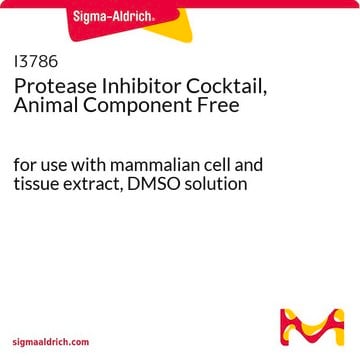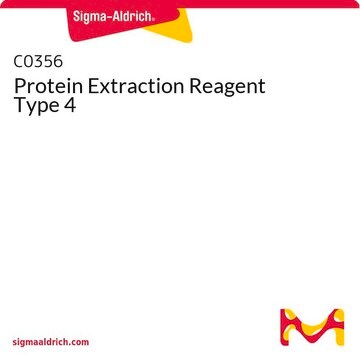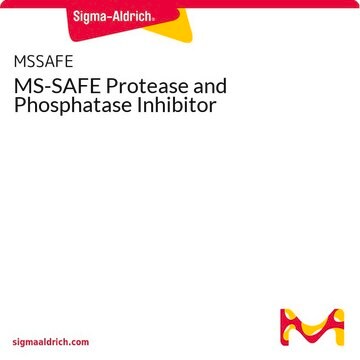P9599
Protease Inhibitor Cocktail
DMSO solution, for the inhibition of serine, cysteine, aspartic, metalloproteases and aminopeptidases, for plant cell and tissue extracts, DMSO solution
Sinónimos:
Protease Inhibitor Mix
About This Item
Productos recomendados
product name
Cóctel de inhibidores de proteasas, for plant cell and tissue extracts, DMSO solution
Quality Level
form
DMSO solution
storage temp.
−20°C
¿Está buscando productos similares? Visita Guía de comparación de productos
Categorías relacionadas
General description
Specificity
Application
Biochem/physiol Actions
Features and Benefits
Optimized and tested for use with plant tissue and cell extracts
Specifically tested on plant seedling extracts from pea, bean, wheat, tobacco, and Arabidopsis, as well as leaf and root extracts from pea, wheat, and tobacco
One mL of solution is recommended for the inhibition of protease activity in 100 mL of cell lysate from 30 g of various plant tissues or 10 g of baculovirus-infected cells
Components
Bestatin
E-64
Leupeptin
Pepstatin A
1,10-Phenanthroline
Caution
Quantity
Preparation Note
related product
Storage Class
10 - Combustible liquids
wgk_germany
WGK 1
flash_point_f
185.0 °F - closed cup
flash_point_c
85 °C - closed cup
Certificados de análisis (COA)
Busque Certificados de análisis (COA) introduciendo el número de lote del producto. Los números de lote se encuentran en la etiqueta del producto después de las palabras «Lot» o «Batch»
¿Ya tiene este producto?
Encuentre la documentación para los productos que ha comprado recientemente en la Biblioteca de documentos.
Los clientes también vieron
Contenido relacionado
Select different protease inhibitor types based on your needs to prevent protein degradation during isolation and characterization and safeguard proteins in sample prep.
Nuestro equipo de científicos tiene experiencia en todas las áreas de investigación: Ciencias de la vida, Ciencia de los materiales, Síntesis química, Cromatografía, Analítica y muchas otras.
Póngase en contacto con el Servicio técnico















